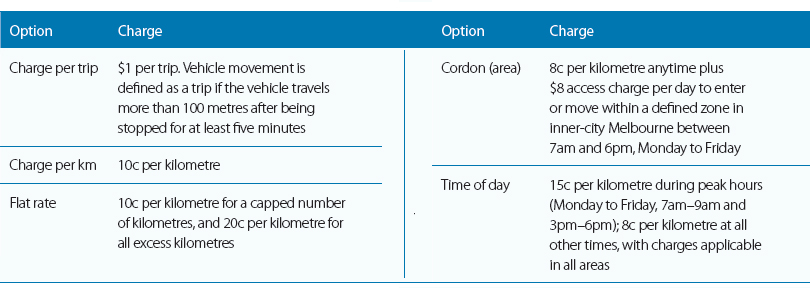Transurban’s Melbourne Road Usage Study
The study captured the responses of 1,635 motorists from the Greater Melbourne region towards five user-pays charging options.
It was designed to gauge motorists’ understanding of the current road funding system and assess their attitudes toward and behaviours under various user-pays options. The study also set out to demonstrate that technology is no longer a barrier to the implementation of a user-pays system.
Study design
Transurban engaged a multi-disciplinary team comprising independent social research and behavioural change professionals, technology and traffic modelling specialists, data technicians and statisticians to help us deliver the study.
Each stage of the project was designed, tested and conducted with guidance from the study reference group, which comprised representatives from federal and state government departments, industry bodies and motoring associations.
TWO ROAD-CHARGING MODELS
Two road-charging models with distinct purposes were tested consecutively during the study.
- Usage-based model – tested participant responses to a user-pays funding model that is more transparent and sustainable as a funding source.
- Congestion-based model – tested how motorists responded to demand-management road charging that used pricing signals in highly congested geographies or at peak travel times to manage road use.
Usage-based charging options Congestion-based charging options

sTUDY ZONES
Study participants were recruited from across the Greater Melbourne region. Participants were recruited from within three zones, each defined by the level of public transport access available. The map below shows where each zone was located.

Participant zone boundaries
Why did Transurban commission this study?
We believe an equitable and sustainable funding model will ensure the liveability of Australia’s cities into the future. As Australia’s largest toll-road operator we were uniquely positioned to conduct this study– we have the necessary technological, strategic planning and research expertise and, importantly, we also have existing connections with the Australian driving community.
We saw we had an opportunity to fill a long-standing knowledge gap in the road-funding reform debate – how Australian motorists would respond to road charging – and we decided to take that opportunity.
Our motivation to contribute to the solving of Australia’s funding and congestion challenges is driven by our commitment to maintaining an efficient road network for our customers, our cities and our shareholders.
Frequently asked questions
-
How credible is the study?
Transurban engaged a multi-disciplinary team comprising independent social research and behavioural change experts, technology and traffic modelling specialists, data technicians and statisticians to help us deliver the study.
Each stage of the project was designed, tested and conducted with guidance from the study reference group, which comprised representatives from federal and state government departments, industry bodies and motoring associations. -
Who participated in the study?
More than 1,600 Melbourne motorists participated in the study. This included 70 pilot group participants and 300 control group participants. All participants were volunteers, and all were private vehicle owners living in households distributed right across the Greater Melbourne region.
-
What user-pays charging options were trialled during the study?
Two road-charging models with distinct purposes were tested consecutively:
Usage-based model
This model tested participant responses to a user-pays funding approach that is more transparent and sustainable as a funding source. Charging options tested by participants included:
• charge per kilometre
• charge per trip
• flat rate (capped kilometres).
Congestion-based model
This model tested how motorists responded to demand-management charging signals to reduce road use in a highly congested area or during peak travel times. Charging options tested by participants included:
• cordon (area)
• time of day.
